Water and gas pipe and its features
Not so long ago, in the construction of virtually any pipelines, water and gas pipelines (VGP) were used. Nowadays, the popularity of them has declined slightly, but they are still widely used in the construction of heat, gas and water systems.
Next, we consider the features of these pipes, their types and methods of installation.
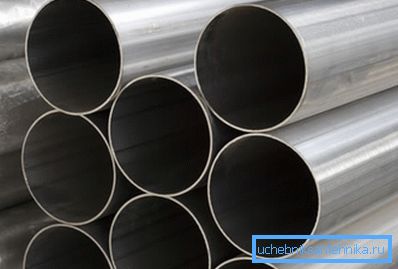
Features of AIV pipe
The great popularity of these products, despite the wide range of pipes on the market, is explained by the fact that the installation of pipelines made of other materials is not possible on sections of open routes. Even polyethylene pipes can be used not for all cases (see also the article Steel water and gas pipes - their characteristics and features).
In addition, some technical conditions define stringent requirements for gas pipelines, as a result of which plastic pipes cannot be used for their installation, no matter how high their performance is. Therefore, there is no doubt that for a long time these pipes will remain relevant.
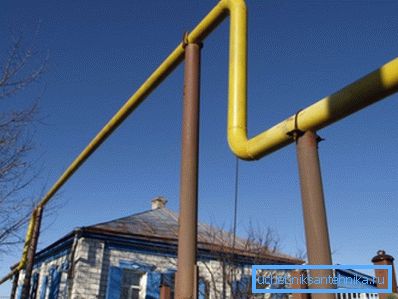
Among their main advantages are the following points:
- Low enough cost;
- The possibility of welding material;
- The possibility of bending;
- High strength;
- Resistance to heat distortion;
- Resistance to strong hydraulic shocks;
- Durability.
It should be noted that all these characteristics of water and gas pipes are characteristic of their entire range.
Note! The durability of the pipeline depends on the operating conditions and the transported fluid.

Manufacturing technology
VGP pipes are made of carbon steel.
Production technology is as follows:
- The first prepared blanks for the product - strips.
- Then they are molded, with the result that the blanks take the appropriate form.
- Next, make a seam using electric welding. After that, the pipe can be considered finished.
The standard quality of these products is regulated by GOST 3262-75. It should be noted that a radiographic radiography is a mandatory quality control procedure. This is due to the fact that the seam is the site of increased risk.
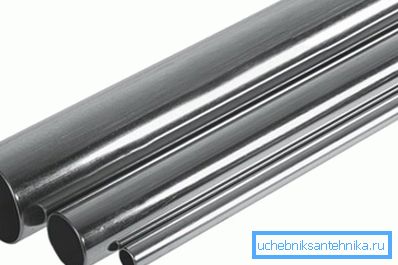
Specifications
Without going into all sorts of nuances that the average consumer is usually not required, consider the basic operational characteristics of these products, the knowledge of which can be useful to work with them.
For example, if it is necessary to perform a non-scale repair of a water supply system or a heating system, one should know which type of pipes should be preferred.
Technical characteristics of the gas and gas pipe according to GOST 3262 75 include:
- Diameter;
- Conditional pass;
- Wall thickness and some other parameters.
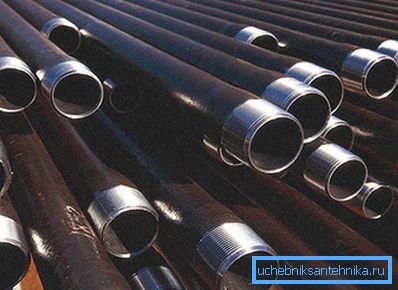
Classification of AIV pipe
The range of water and gas pipes also determines GOST 3262-75, according to which products primarily differ in:
- Galvanized steel;
- Non galvanized steel (black).
Zinc prevents the development of corrosion. Accordingly, the durability of galvanized products may be higher.
In addition, according to the degree of readiness, pipes can be:
- With threaded cuts at both ends;
- Without thread.
Note! On the pipe manufacturer may be applied short or long thread. Galvanized threaded pipes can also be equipped with couplings.
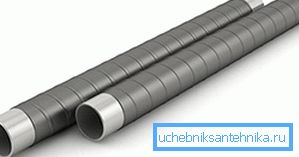
Depending on the wall thickness, the black VGP pipe is divided into the following types:
- Reinforced - wall thickness from 2.5 to 5.5 mm.
- Light - wall thickness ranges from 1.8 to 4 mm.
- Ordinary - wall thickness in the range of 2 - 4.5 mm.
Light tubes can operate at a hydraulic pressure of about 25 kgf / cm2, while the reinforced ones can withstand 32 kgf / cm2.
Accuracy groups
There are two accuracy groups for this product:
| Normal accuracy | In the manufacture of these products are not standardized mechanical properties and chemical composition. As a rule, they are used for gas pipelines, water pipes and domestic heating systems. |
| Increased accuracy | Galvanized pipes belong to this group. They are used in the installation of global highways. Products withstand an internal pressure of 40-50 atmospheres. |
Note! When marking the considered products do not indicate the outer diameter. This parameter is replaced by the conditional passage, which remains unchanged, regardless of the wall thickness. Conditional pass (DU) and thickness of walls are regulated by GOST.
Normalization
VGP pipes are usually manufactured by manufacturers of the following lengths:
- 4-12 meters;
- Measured multiple lengths;
- Unmeasured length (located within the measured).
The maximum deviation in terms of length and weight should not exceed more than eight percent. I must say that the price of products depends not on its length, but on weight. Accordingly, the larger the diameter and thickness of the walls, the higher its cost.
Note! The weight of galvanized pipe differs from the weight of ordinary products by 3 percent in a big way.
The weight of the gas pipeline according to GOST 3262 75 is calculated taking into account the steel density of 7.85 g / cm3. The maximum weight per running meter (wall thickness 5.5 mm and diameter 165 mm) is 21.63 kg. The minimum weight per running meter is 370 g (product diameter is 10 mm and wall thickness is 1.8 mm).

Installation Features
Installation of pipelines using this material can be done in two ways:
- Threaded method using couplings;
- By electric welding connection.
Installation instructions in the first case looks like this:
- First of all, the locknut must be screwed onto the threaded bar.
- Then the thread must be lubricated with a sealant or wrap tow, pre-impregnated with a sealant. For the installation of the pipeline, you can impregnate tow with grease.
- Then the thread should be screwed into the sleeve.
- The threaded connection of the parts must be secured with a lock nut, which must be tightened before tight contact with the coupling.
As for the welded installation, it is necessary to use pipes with smooth ends.
The wiring diagram is as follows:
- The ends of the joined parts are located on a flat surface and pressed against each other.
- Then, in the joint area, tacking is performed - a spot-welded joint from several sides.
- After that, stuck pipes must be leveled horizontally. You can simply roll them on a flat surface.
- After this, the junction is sealed with a solid seam around the circumference.
I must say that to make such a connection with your own hands, if you are not an experienced welder, it is unlikely to succeed. Therefore, for independent repairs it is better to use the first option.
Conclusion
Despite the great popularity among consumers of polymer pipes, VGP pipes remain very popular, and will remain so for a long time. This is due to their characteristics and a number of other advantages voiced above.
From the video in this article, you can get more information on this topic.